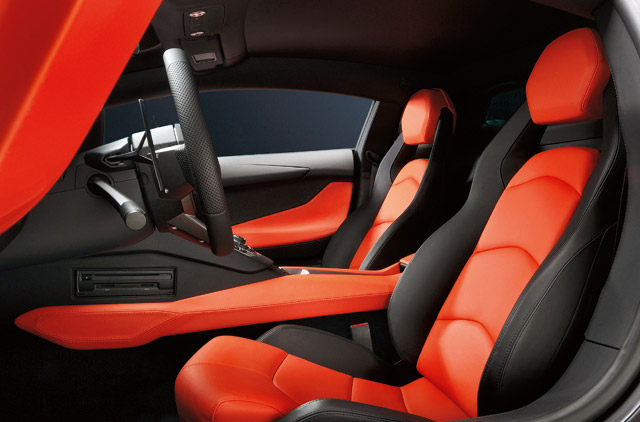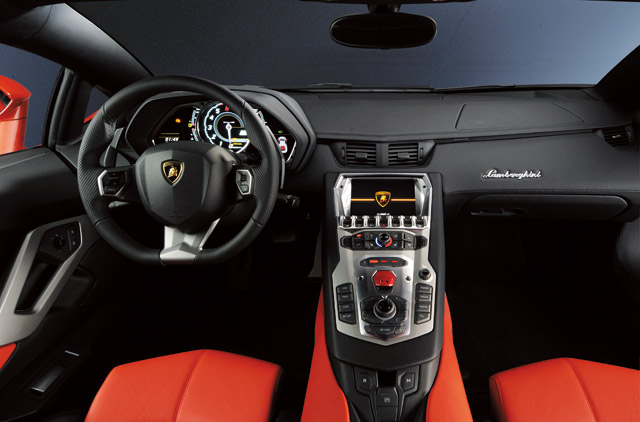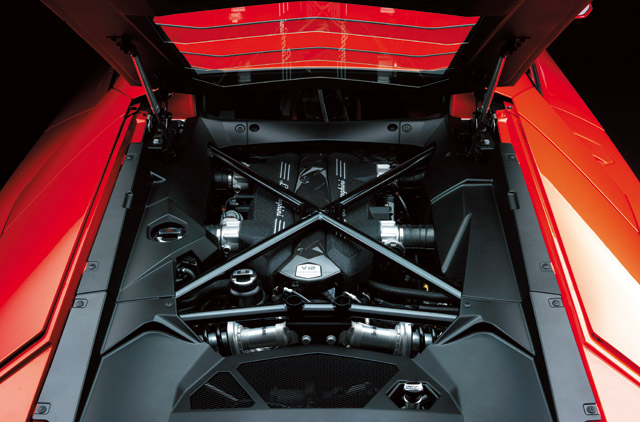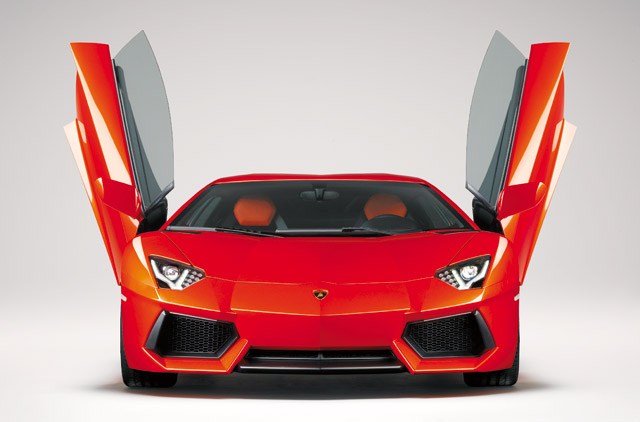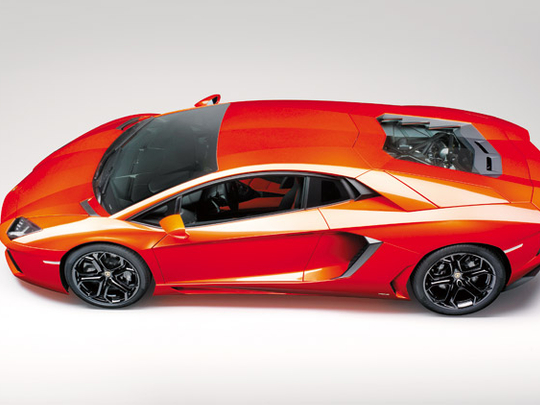
Thirty eight years. That's quite a career for a 60-degree V12 engine that started its life as a twin-carbed 3.5-litre in 1963 and ends it this year as a 6.5-litre with a magnesium manifold and multi-point fuel injection. Legendary car engineer Giotto Bizzarrini designed the celebrated V12 for Ferruccio Lamborghini, who paid the former Ferrari man an extra wad of lire for every horsepower he could get over a Maranello V12.
Four decades later, time has proven Bizzarrini's creation to be even more astounding; it's almost doubled in displacement, gained electronic injection, dry-sump lubrication, and makes twice the original 320bhp in the 640 horsepower Murciélago.
But close to 40 years in this business is a long and prosperous life, and Bizzarrini's V12 has just moved from the front pages to the obituaries — R.I.P. big V12, you'll be sorely missed.
Um, no, no that's quite wrong, actually you won't be missed at all… Because Lamborghini has finally unveiled the new Aventador LP700-4 and as the name suggests, it's a grunting and snorting bull wearing a 700bhp V12 backpack. A brand new Lamborghini V12.
As you can see, the car looks nice and all, but we'd like to start from the inside. The heart of the Aventador was developed completely by Lamborghini, including the electronics tasked with managing the complex V12 internals. Natural aspiration, naturally, was the starting point on this clean-sheet design, as was the number of cylinders. Any lower and the pistons and con-rods would need to be larger and heavier at this capacity, lowering the rev range. Known internally as the L539, the new V12 is smaller and lighter than before, enabling a lower centre of gravity, while consuming less fuel and spewing fewer carbons into the atmosphere.
A 90-degree V angle would obviously make for a lower engine, but a 60-degree was chosen for better balance; in any case the unit measures 665mm from top to bottom with the intake system, weighing 235kg — comparable to a Corvette V8's weight. With 6.5 litres of displacement, cylinder spacing is a generous 103.5mm allowing plenty of room for a 7.0-litre (or more) in the future, while the short 76.4mm stroke means quick high-revving characteristics — the red line is at 8,250rpm with the pistons travelling at 21m per second at this point, which is relatively slow compared to the old V12 and therefore more reliable.
A compression ratio of 11.8:1 was favoured, with electronically controlled valve timing, thermal management and optimised oil circulation necessary for this extremely high compression.
Finally, to ensure the engine never gets starved of oil, the V12 gets dry sump lubrication with eight scavenger pumps. This system of lubrication enabled engineers to drop the engine 60mm lower in the Aventador's carbon monocoque chassis.
Sitting behind the driver, the engine is mated to a Lamborghini-designed single-clutch seven-speed all-wheel drive transmission operated by paddle shifters. The robotised gearbox saves weight compared to a twin-clutch design, but operates in a similar fashion since the engineers managed to halve the distance between individual gears, and hence halve the shift times making them comparable to 'boxes such as Porsche's PDK.
The chassis too is as drool-worthy as Megan Fox in a bathtub of Royal Purple. The entire monocoque is made of carbon fibre using Boeing know-how, for a total weight of 147.5kg. The supreme torsional rigidity this construction offers is joined by pushrod springs and dampers — just like in F1 — as well as aluminium double wishbones and carbon brakes, to blitz any road or track you tackle.
The main stats are a bit worrying actually; a 350kph top speed and 0-100kph in 2.9 seconds, meaning only the likes of Bugatti Veyron can really take the Aventador on in a drag race.
But even if we never get to push this brute to the max, we'd be happy just to sit there revving its new V12. For at least another four decades, hopefully.


